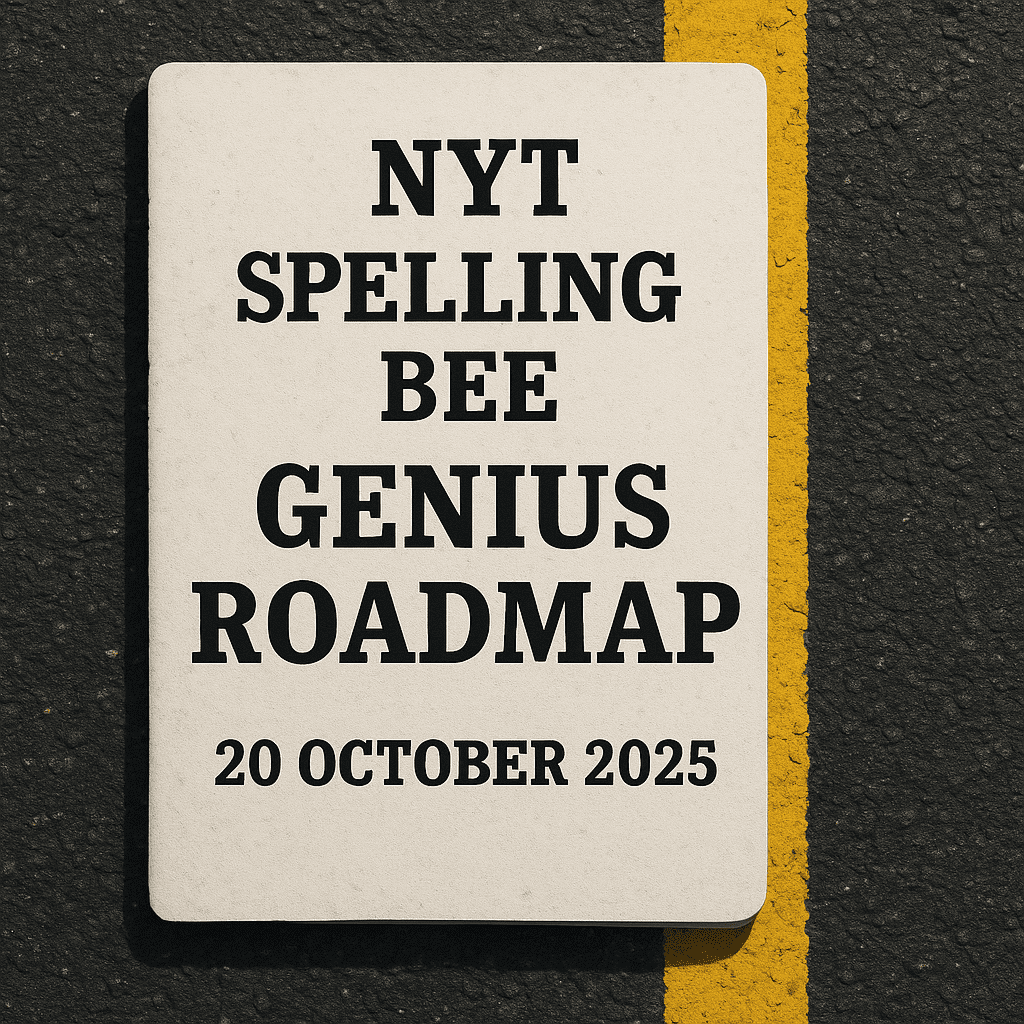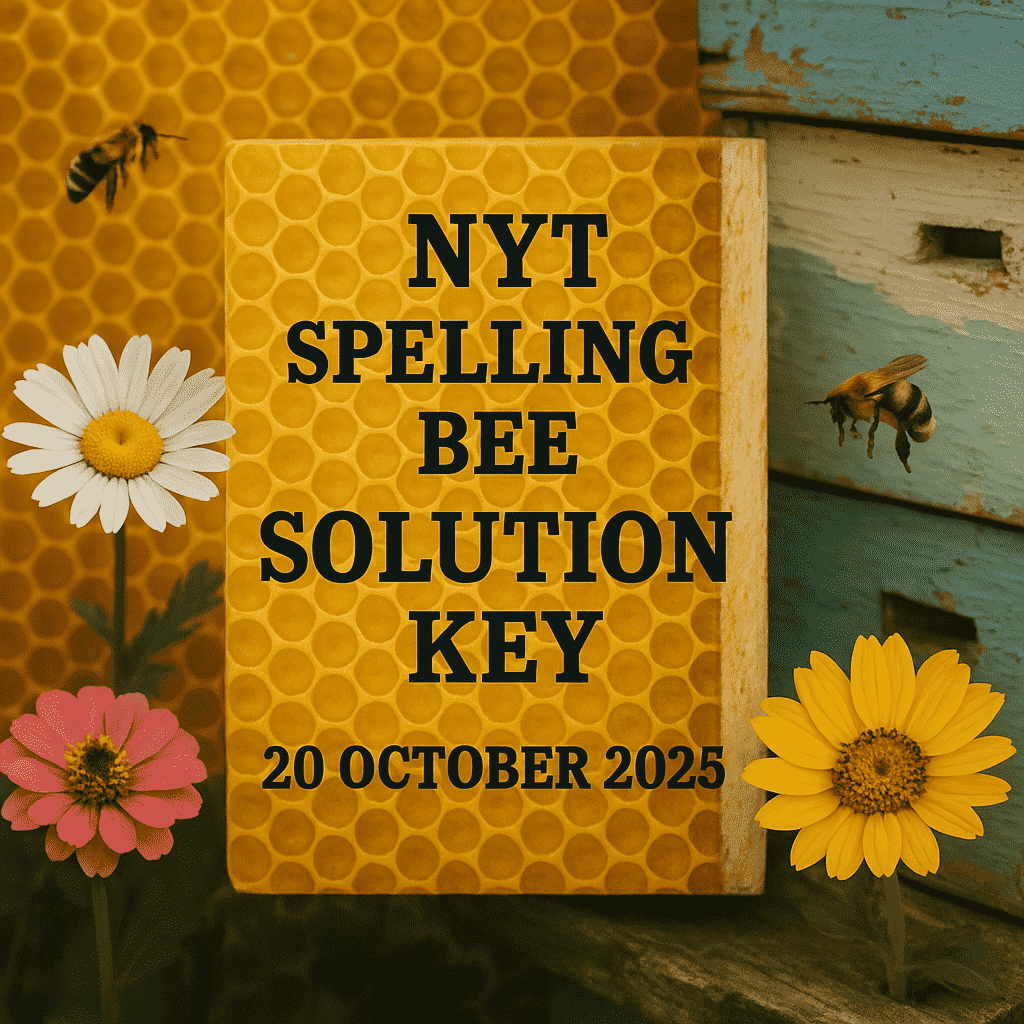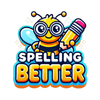Today’s Spelling Bee puzzle was one of those rare days with two pangrams — UNHINGED and UNHEEDING. With H in the center and I, N, U, D, E, G around it, this hive was perfectly designed for long, expressive words that demanded both focus and patience.
Let me take you through how I cracked both pangrams step by step, along with all the possible words that made this puzzle so satisfying.
How to plan NYT Spelling Bee solves
Step 1: Observing the Hive
The center letter was H, meaning every word had to include it. The outer letters — I, N, U, D, E, G — gave a well-balanced mix of vowels and consonants.
At first glance, this looked like a “soft” hive — smooth vowel transitions and few harsh consonant clusters. But that also meant that the key would lie in combining syllables creatively, especially around HIN, HEE, and HUNG patterns.
Step 2: Getting Started with Simple Words
I always warm up with 4-letter guesses to get my brain moving. Words like HIND, HUGE, HUNG, and HEED came quickly. Then, I spotted HINGE, which instantly opened up a new word family — HINGED, UNHINGE, and possibly something longer.
That’s when the real puzzle began.
Step 3: Finding the First Pangram — UNHINGED
After noticing HINGE, I experimented with prefixes. Adding “UN–” gave me UNHINGE, and from there, extending it further led to UNHINGED — using all seven letters: U, N, H, I, N, G, E, D.
It fit beautifully, both structurally and semantically.
Pangram #1: UNHINGED
Meaning: Emotionally unstable or mentally disturbed; literally “taken off its hinges.”
It was a rewarding discovery — but little did I know, there was another pangram waiting quietly nearby.

While reviewing other “UN–” combinations, I stumbled upon HEED — meaning to pay attention. Naturally, I tried adding prefixes and suffixes: “HEEDING,” “UNHEED,” and finally UNHEEDING.
It clicked instantly — another perfect pangram using all seven letters.
Pangram #2: UNHEEDING
Meaning: Showing no attention or regard; careless or inattentive.
That’s what makes today’s puzzle special — both pangrams revolve around mental states: one describing instability and the other inattention. A rare thematic coincidence!
Step 5: Building the Full Word List
Once both pangrams were discovered, the smaller words became easier to spot. Here’s the comprehensive list that filled today’s grid:
4-Letter Words
- HIDE
- HUNG
- HUGE
- HIND
- HEED
- DUNE
- NUDE
- GHEE
- HUED
- HIGH
- NIGH
5-Letter Words
- HINGE
- NUDGE
- GUIDE
- HUNDE
- INHUE
- HEDGE
- HENGE
- NEIGH
- UNHID
6-Letter Words
- HINGED
- HEEDIN (rare)
- NUDGED
- HEDGED
- HEEDED
- HEINIE
- HIDDEN
- HIDING
- HUGGED
- UNHUNG
7+-Letter Words
- HEEDING
- UNHINGE
- NUDGING
- UNHINGED (Pangram)
- UNHEEDING (Pangram)
- HEDGING
- HINGING
- HUGGING
- NEIGHED
- NEIGHING
- UNHEEDED
- UNHIDDEN
- UNHINGING
Two pangrams in one hive is a rarity — and they’re both satisfying, strong words that feel good to type and even better to find!

Step 6: Strategy Breakdown
Here’s how I approached it systematically:
-
Fix on the center letter “H.” It’s the anchor that defines your rhythm.
-
Experiment with prefixes like “UN–” and suffixes like “–ED” or “–ING.”
-
Spot repeating syllables. “HIN,” “HEE,” and “ING” were the keys today.
-
Don’t ignore small variations. Sometimes plural or past tense forms lead to bigger discoveries.
This method not only revealed the pangrams but also helped uncover every smaller word along the way.
Did You Spot the Pangram?
Today’s hive was a delight — logical yet creative, challenging but fair. The two pangrams complemented each other perfectly, offering both linguistic symmetry and thematic depth.
Whether you found UNHINGED first or UNHEEDING, reaching both was a true sign of mastery.
If this puzzle made your head spin for a bit — well, that’s part of the charm. Every letter, every guess, every “aha!” moment adds up to a richer understanding of how words connect.






